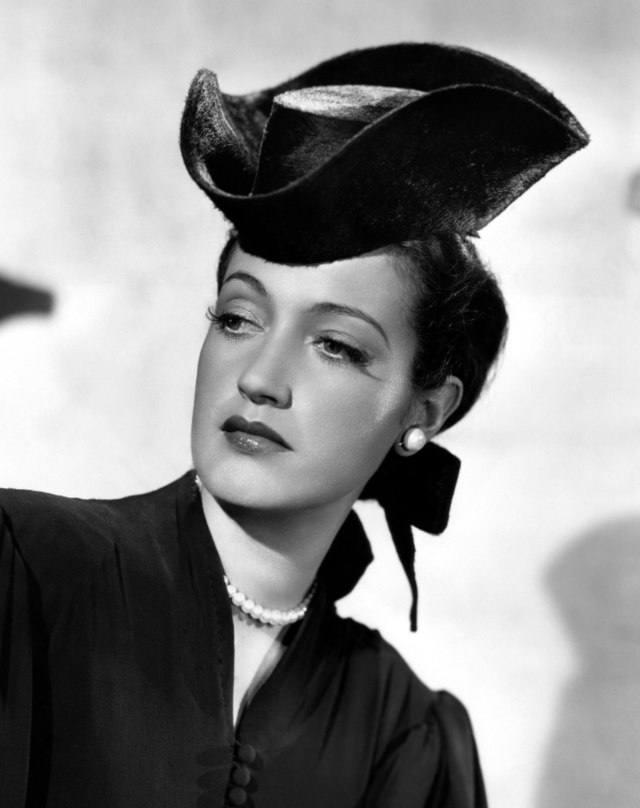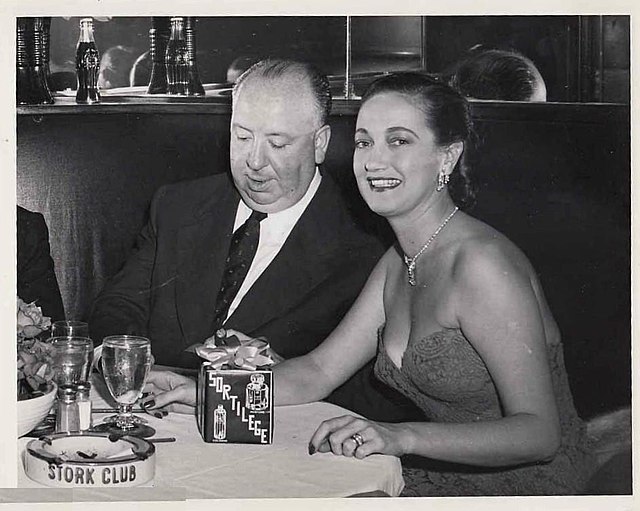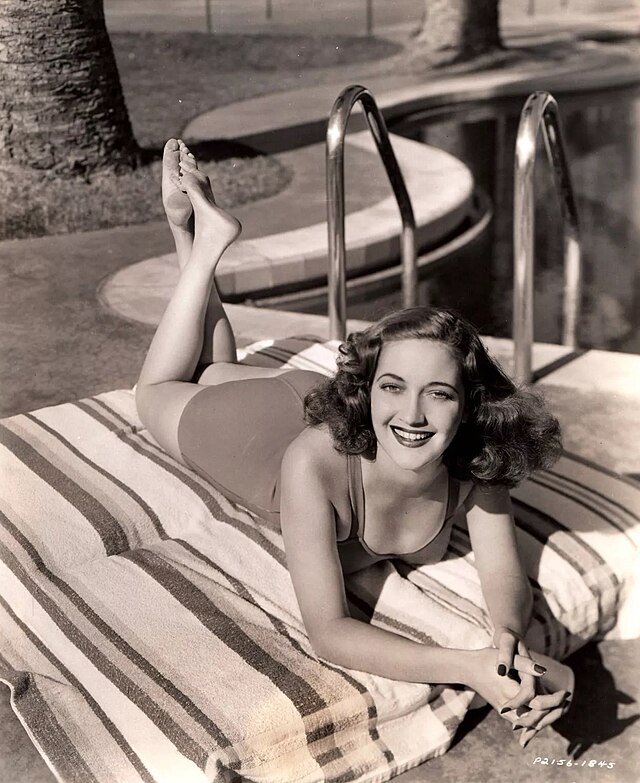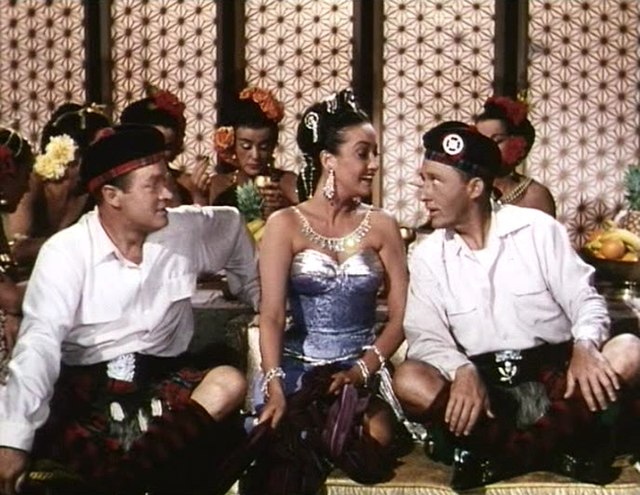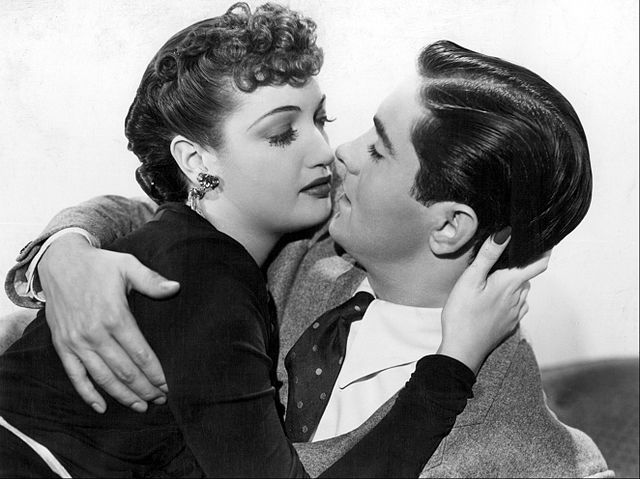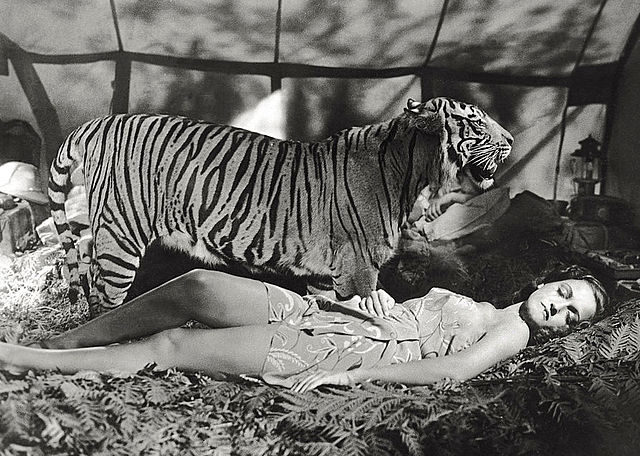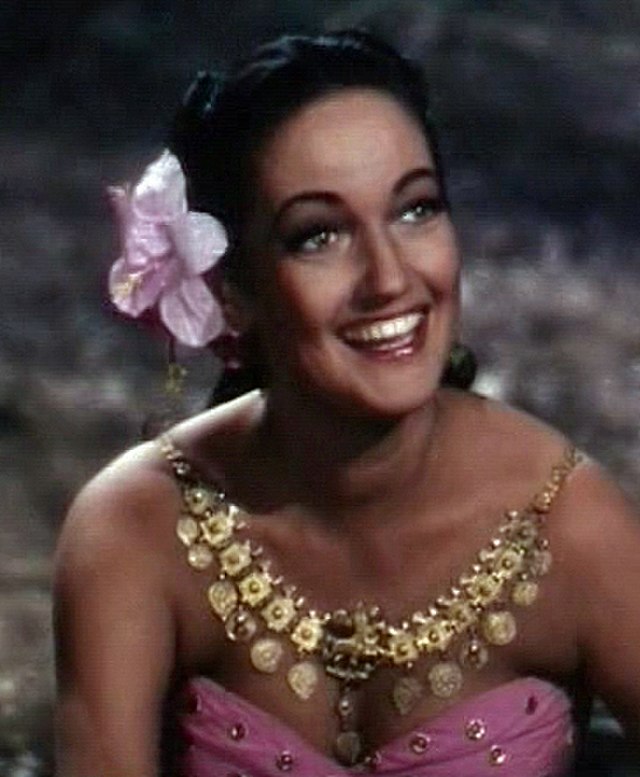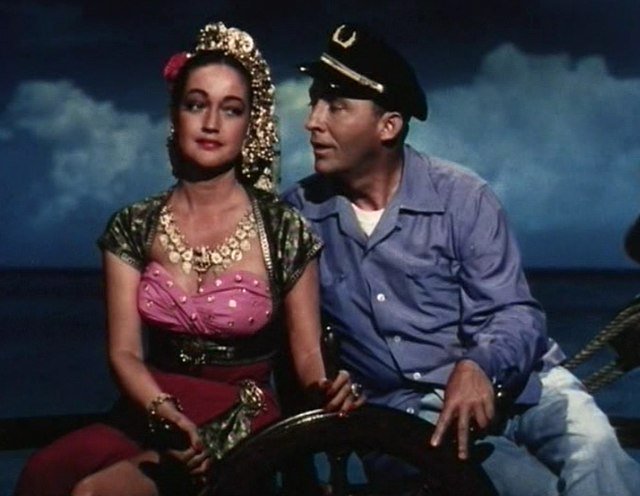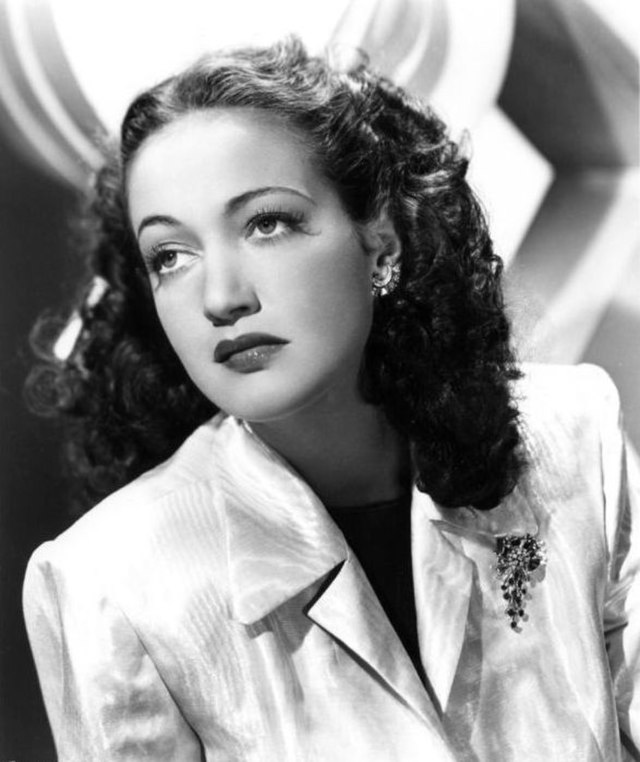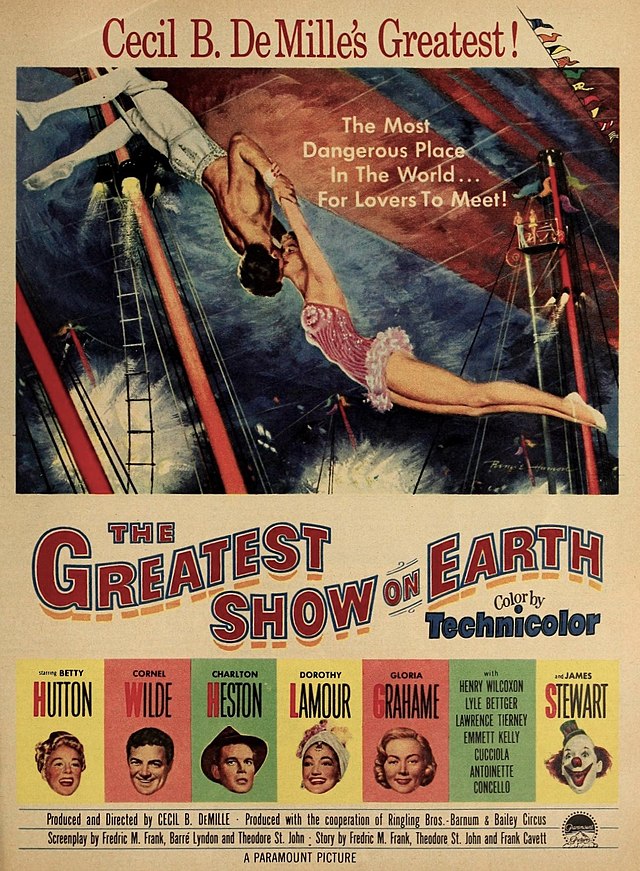Dorothy Lamour
back| Full Name | Mary Leta Dorothy Slaton |
| Stage Name | Dorothy Lamour |
| Born | December 10, 1914 |
| Birthplace | New Orleans, Louisiana, U.S. |
| Died | September 22, 1996 |
| Buried | Forest Lawn, Hollywood Hills Cemetery, Los Angeles, California |
| Married to | Herbie Kay (m. 1935; div. 1939) - William Ross Howard III (m. 1943; d. 1978) |
| Children | John Ridgely Howard - Richard Thomson Howard |
| Notable films | The Hurricane (1937) - Road to Singapore (1940) - The Greatest Show on Earth (1952) |
Dorothy Lamour
The Sarong Girl
Dorothy Lamour's big break came when she was cast in The Jungle Princess (1936), where she played a "sarong girl," a look that would become iconic in her career. The sarong image stuck with her, and she became synonymous with tropical and exotic roles.
Her collaboration with Bing Crosby and Bob Hope in the "Road to..." films from the early 1940s made her a major star, showcasing her comedic talent in addition to her exotic allure. The films were highly successful and added to her reputation as a versatile actress and singer.
Related
Dorothy Lamour (1914 – 1996)
Biography and Movie Career
Born on December 10, 1914, in New Orleans, Louisiana, Dorothy Lamour came into the world as Mary Leta Dorothy Slaton. Her early life was far from the glamorous image she later embodied on screen. Her father, John Watson Slaton, and mother, Carmen Louise LaPorte, divorced when she was a child, leaving her to be raised by her mother and grandmother. Her mother’s subsequent marriage to Clarence Lambour influenced Dorothy's future stage name. Although her stepfather left the family early on, she adopted a version of his last name, "Lamour," to build her Hollywood persona.
Lamour’s childhood was modest, and she attended Catholic schools in New Orleans. Financial struggles often weighed heavily on the family, but Dorothy was determined to succeed in entertainment from an early age. Her entry into the world of glamour began when she was crowned "Miss New Orleans" in a beauty contest in 1931. That title opened doors, and soon after, she moved with her mother to Chicago, where her ambition to enter show business began to take shape.
The Path Towards Stardom
Initially, Lamour’s career was focused on singing rather than acting. She toured with Herbie Kay’s orchestra as a vocalist, and her sultry voice gained attention. Her relationship with Kay wasn’t purely professional—Dorothy and Herbie were married in 1935, though their union was short-lived and ended in divorce in 1939. Nevertheless, her exposure in the music scene helped her break into radio, where she continued to gain popularity.
Dorothy’s path to Hollywood began when she moved to California in the mid-1930s, where her stunning beauty, charming demeanor, and vocal talents caught the eye of producers. She was signed by Paramount Pictures in 1936, and almost immediately she was cast in the film that would make her a star, The Jungle Princess (1936). In the film, she portrayed Ulah, a native girl who wore a sarong—a look that became her trademark. The image of Lamour in a sarong was iconic, and she would go on to wear it in several other films, even though she later jokingly referred to it as her “fitted bedsheet.”
Rise to Fame
Lamour quickly gained international fame after The Jungle Princess. Her image as the exotic "sarong girl" was cultivated by Hollywood, and it was this persona that captivated audiences worldwide. However, Dorothy was more than just a beautiful face; she had a talent for both singing and acting, which helped her avoid being typecast. Her notable singing abilities featured in various films, adding to her charm and versatility.
Her most enduring contribution to cinema came from her work in the “Road to...” series of films. Starring alongside Bing Crosby and Bob Hope, Lamour was the female lead in these beloved comedies that spanned from Road to Singapore (1940) to Road to Bali (1952). Her role in these films often placed her as the romantic interest and the source of wit and charm. While Crosby and Hope's comedic antics dominated, Lamour's presence brought balance to the trio, and her chemistry with both actors was undeniable.
The "Road to..." films were a massive success and became a defining part of her career. Though she occasionally grew frustrated with being the foil to Crosby and Hope’s comedic duo, she later reflected fondly on the experience. These films solidified her as one of the leading ladies of Hollywood in the 1940s.
Personal Life and Marriages
Dorothy Lamour's personal life was marked by two significant marriages. Her first marriage, to orchestra leader Herbie Kay, ended in divorce in 1939, just as her Hollywood career was taking off. Lamour later described the marriage as challenging due to the distance and the different directions their lives were taking.
In 1943, Lamour married William Ross Howard III, an Air Force officer and businessman. The couple had two sons, John Ridgely Howard and Richard Thomson Howard, and their marriage lasted until William's death in 1978. Lamour’s family life with Howard was relatively private, and she chose to devote much of her energy to her children and home life, especially as her career began to slow down.
Lamour had a deep sense of responsibility towards her family. Her sons have often described her as a loving, devoted mother who managed to balance her glamorous career with being a warm and nurturing parent.
Passions Beyond Acting
Though Dorothy Lamour was primarily known for her acting career, she had many interests and talents beyond the screen. Music was one of her first loves, and she remained passionate about singing throughout her life. In addition to appearing in films, she also recorded several songs during her career, showing her versatility as a performer. Her hit single "Perfidia," recorded during her Hollywood years, showcased her smooth, sultry voice.
Later in life, Lamour turned her attention to the stage, appearing in various theatrical productions, including the musical Hello, Dolly!, where she played the title role. She also made several television appearances and returned to her roots as a singer in nightclubs and on variety shows. Even when she wasn’t acting or performing, Lamour was involved in charity work and was a committed supporter of the armed forces, entertaining troops during World War II as part of the USO tours.
The Final Years and Legacy
As her film career slowed in the 1950s, Dorothy Lamour shifted towards television and theater. Although she appeared less frequently on screen, her legacy as one of Hollywood’s classic leading ladies remained strong. She made guest appearances in various TV shows throughout the 1960s and 1970s, and she also returned briefly to film with cameo roles, most notably in The Road to Hong Kong (1962).
Her final years were spent largely out of the spotlight, though she occasionally gave interviews and made public appearances at events celebrating classic Hollywood. She remained active in charity work and continued to be admired for her long-standing contributions to entertainment.
Dorothy Lamour passed away on September 22, 1996, at her home in North Hollywood, California. The cause of death was a heart attack. She was 81 years old. Lamour is buried at Forest Lawn Cemetery in the Hollywood Hills, leaving behind a legacy as one of Hollywood's most beloved stars.
Legacy
Dorothy Lamour’s image as the "sarong girl" and her role in the "Road to..." films are lasting parts of her Hollywood legacy. Though typecast early in her career, she succeeded in transcending that initial image and became a versatile performer who brought elegance, wit, and warmth to every role she played.
In addition to her contribution to cinema, Lamour was a trailblazer for her generation of actresses—balancing beauty with brains, comedy with grace, and fame with family. Her films, particularly the ones with Bing Crosby and Bob Hope, continue to be celebrated as classics of Hollywood’s Golden Age.
Short Video Bio on Dorothy Lamour
Unpretentious Acting Style
Dorothy Lamour’s acting style was defined by a unique blend of natural charm, exotic allure, and unpretentious grace. While often remembered for her beauty and iconic roles in tropical-themed films, particularly in her signature "sarong girl" roles, Lamour had much more to offer than just physical appeal. Her acting was a delicate balance of warmth, humor, and sincerity that allowed her to shine in various genres, from adventure films to musicals and comedies. Below is a detailed analysis of her acting style:
Natural and Unpretentious Presence
One of the most distinctive aspects of Lamour's acting was her natural, easygoing presence on screen. Even when portraying exotic characters in far-off lands, she never came across as over-the-top or artificial. She had a down-to-earth quality that made her relatable, even in roles where she was meant to be distant or unattainable. This authenticity set her apart from other actresses who relied heavily on glamour or artifice to captivate audiences.
For example, in The Jungle Princess (1936), where Lamour first donned the sarong, she played a native girl with a childlike simplicity and charm, balancing the exoticism of her role with an accessible, grounded innocence. She could make these fantastical characters feel human and real, connecting with audiences who might otherwise find them one-dimensional.
Subtle Sensuality
Lamour’s beauty was one of her greatest assets, but unlike some contemporaries who capitalized on overt sex appeal, her sensuality was more subtle and understated. She could exude an exotic allure without being overly suggestive, embodying a "less is more" approach. Her characters were often mysterious and alluring, yet approachable and familiar.
Her portrayal of Ulah in The Jungle Princess is a great example of this balance. She was undeniably beautiful and alluring, but her performance leaned more on softness and emotional connection than on sexual provocation. She charmed her co-stars and the audience with her eyes, smile, and a gentle vulnerability that drew people in.
Versatility in Comedy
Dorothy Lamour’s versatility shone in her comedic roles, particularly in the legendary "Road to..." series with Bing Crosby and Bob Hope. These films showcased her ability to play the straight woman in a trio of comedic geniuses. While Crosby and Hope’s zany antics took center stage, Lamour’s ability to maintain composure while reacting with deadpan humor and subtle wit added a perfect counterbalance to the chaos. Her comedic timing was precise, and she never attempted to outshine her co-stars but instead worked in harmony with them to create moments of effortless humor.
In Road to Morocco (1942) and Road to Utopia (1946), Lamour held her own alongside two of the biggest comedic stars of the era. Her reactions to their antics were often droll, delivering her lines with a straight face while her male co-stars engaged in slapstick. Her performances gave a sense of knowing amusement, as if her character was always a step ahead of the male leads. This ability to be in on the joke without overshadowing it made her an indispensable part of the trio.
Musical Talents as an Extension of Acting
Lamour’s musical performances were not separate from her acting but rather an extension of it. Her singing style was smooth and sultry, perfectly in sync with her screen persona. Whether performing a heartfelt ballad or a playful number in a musical, she brought the same blend of sincerity and charm to her musical performances as she did to her acting.
For instance, in The Fleet’s In (1942), her performance of the song "The Man I Love" was a showcase of her ability to combine musicality with emotional expression. Her voice was lush, but it was her ability to communicate longing and vulnerability through her singing that resonated with audiences. This connection between her acting and musical abilities gave her an edge in the musical comedies of the 1930s and 1940s, setting her apart from other actresses who might have excelled in one domain but not the other.
Balancing Glamour with Relatability
Dorothy Lamour was undeniably glamorous, but she didn’t rely on a purely distant or unattainable image to connect with audiences. Her beauty had an approachable quality that made her relatable to everyday moviegoers. She didn’t play untouchable goddesses or queens; instead, her characters were women you could imagine knowing or befriending, even in the most exotic settings.
This quality is evident in films like The Greatest Show on Earth (1952), where she played a trapeze artist in a circus. Despite the high-flying drama of the story, Lamour’s performance remained rooted in a relatable, human portrayal of a woman struggling with love and ambition. She balanced the glitzy spectacle of the circus with a warm, down-to-earth charm.
Sincerity in Dramatic Roles
Though Lamour is best known for her lighter, comedic, and musical roles, she also displayed considerable talent in dramatic performances. Her roles in films like Spawn of the North (1938) and A Medal for Benny (1945) showcased a deeper emotional range. She could portray inner turmoil, heartbreak, and strength with the same naturalism that characterized her more lighthearted roles.
In A Medal for Benny, for example, Lamour played Lolita, a woman caught in a web of small-town politics and the grief of losing someone in wartime. Her performance was poignant and understated, focusing more on quiet emotion than on dramatic outbursts. Lamour’s ability to convey complex feelings with just a glance or a shift in her tone made her performances all the more effective.
Self-Awareness and Adaptability
Dorothy Lamour’s career was marked by her ability to be self-aware and adaptable, qualities that helped her navigate Hollywood's changing landscape. She never took herself too seriously and was often in on the joke, especially in her comedic roles. This was apparent in her frequent ribbing about the iconic sarong that helped define her early career. Lamour embraced her signature look and was willing to poke fun at it later in her career, showing her humor and humility.
This self-awareness allowed her to adapt to different genres, from tropical adventures to comedies to musicals, without ever seeming out of place. She could inhabit various characters without clinging to any particular type, demonstrating a versatility that gave her lasting appeal.
Conclusion
Dorothy Lamour’s acting style was defined by a combination of natural beauty, subtle sensuality, humor, and sincerity. She excelled at making exotic, far-flung characters feel grounded and relatable, while also showing impressive versatility in musicals and comedies. Her ability to work harmoniously alongside comedic giants like Bing Crosby and Bob Hope without being overshadowed speaks to her strong screen presence and impeccable timing. Lamour was more than just the “sarong girl”; she was a performer with warmth, grace, and adaptability that made her a beloved star of Hollywood’s Golden Age.
Memorable Quotes from Dorothy Lamour
On Her Iconic Sarong:
- "I was the happiest and highest-paid straight woman in the business."
This quote reflects Lamour’s humor and humility about her role in the "Road to..." films alongside Bob Hope and Bing Crosby, where she often played the "straight woman" to their comedic antics. - "I’ve been typed as a sarong girl, and I’m afraid I’ll be playing in a sarong when I’m 90."
Lamour often joked about how the sarong became a lasting image associated with her, even though she wanted to be recognized for more than just those roles.
On Her Career:
- "I never planned to be an actress. It just happened. I always wanted to be a singer."
This quote reveals that Lamour’s first passion was music, and her Hollywood acting career was somewhat unexpected, though it eventually became her primary calling. - "When they said I was the new ‘It’ girl, I felt like a prize cow at a state fair."
Lamour poked fun at the Hollywood machine and how stars could be marketed based on their looks or specific traits, even if it wasn’t something they initially sought.
On Working with Bing Crosby and Bob Hope:
- "It was a love affair with the public. I guess you could say we were one of the original love triangles."
Lamour reflected on the beloved comedic trio that she formed with Bing Crosby and Bob Hope in the "Road to..." films, where the dynamic between them delighted audiences for years. - "I felt like the last of the Mohicans, the only girl in the boys' club."
In this quote, Lamour humorously described her unique position as the female lead alongside Crosby and Hope, often being the voice of reason in the midst of their comedic chaos.
On Hollywood and Fame:
- "Glamour is just sex that got civilized."
Lamour often made witty remarks about Hollywood’s obsession with glamour and beauty, recognizing how these ideals shaped her own image in the public eye.
On Aging and Legacy:
- "I was busy singing and being alive, and that's how I want to be remembered."
Near the end of her career, Lamour expressed that despite being typecast and remembered for certain iconic roles, what mattered most to her was living life to the fullest and sharing her talents with the world.
What Others said about Dorothy Lamour
Bob Hope (Co-star in the "Road to..." films)
- "Dorothy was the perfect partner. She never tried to outdo you; she just went along with the gags, looking gorgeous and playing the straight woman." Bob Hope often praised Lamour for her ability to play the perfect counterpart to his and Bing Crosby's antics in the "Road to..." series. He appreciated her comedic timing and her willingness to be part of the joke, without ever trying to overshadow her co-stars.
- "She was a lady, but she could laugh with the boys. We loved her." Hope frequently spoke about how Lamour’s easygoing nature and sense of humor made her a beloved member of their famous trio. Despite often being the object of their jokes, Lamour handled it with grace and was always a good sport.
Bing Crosby (Co-star in the "Road to..." films)
- "Dorothy was the glue that held us together in those films. We could act like clowns because she was there to keep it grounded." Bing Crosby admired how Lamour balanced the zaniness of the "Road to..." films with her charm and poise. He recognized that without her, the films might not have had the same success or heart.
Cecil B. DeMille (Director of The Greatest Show on Earth (1952))
-
"Dorothy Lamour is an actress who can command attention in any scene, and she doesn’t need tricks to do it. She’s a star in every sense of the word." DeMille, who directed her in The Greatest Show on Earth, praised Lamour’s natural screen presence and charisma. He saw her as a true star who could hold her own alongside major actors in dramatic films, despite being better known for lighter roles.
Howard Hawks (Director of The Big Broadcast of 1938 (1938))
- "She had an unpretentious quality that made her perfect for the screen. She never needed to overact or be showy; the camera loved her." Hawks valued Lamour’s effortless acting style, which worked well for both comedic and dramatic roles. He appreciated her ability to be both glamorous and relatable, a combination that made her endearing to audiences.
William Ross Howard III (Her second husband)
- "Dorothy was more than the woman you saw on screen. She was a devoted wife and mother, and she brought that same warmth and love to our family." Her second husband, William Ross Howard III, spoke lovingly of Lamour’s dedication to her family. Despite her fame, Lamour remained deeply grounded in her personal life, focusing on her children and her role as a wife, especially as her career slowed down later in life.
Her Sons, John and Richard Howard
- "She was a doting mother who never let the glamour of Hollywood take her away from her family." Lamour’s sons, John and Richard Howard, often spoke about how their mother was completely devoted to them, even during her busiest years in Hollywood. She managed to balance being a movie star with being a loving, nurturing presence in their lives.
Classic Film Critics
- "Dorothy Lamour is the definition of an enduring icon of Hollywood’s Golden Age. Her warmth, elegance, and humor made her a beloved star, and she’ll forever be remembered for her roles in the ‘Road to...’ films."
Many film critics have celebrated Lamour's lasting influence in Hollywood, especially for her work in the "Road to..." films. She was often hailed as a key part of what made those films successful and as an actress who brought versatility and depth to her roles.
Friends and Co-Stars
- "Dorothy was one of the most gracious women I ever met in this business. She was never affected by her fame and always treated everyone with kindness and respect." Friends and colleagues from her time in Hollywood frequently described Lamour as down-to-earth and unassuming, despite her success. They admired her grace and humility, noting that she was never swept up by the egos and pressures of the entertainment industry.
USO and Armed Forces
-
"Dorothy Lamour was a favorite of the troops. She was known for her dedication to the USO and for bringing joy and laughter to servicemen during some of the darkest days of World War II." The USO and military personnel who met Lamour during her tours during World War II remembered her for her unwavering support of the troops. She was deeply admired for her patriotism and generosity, and she became a favorite entertainer among soldiers stationed overseas.
Awards and Recognition
Dorothy Lamour, while primarily recognized for her contributions to cinema as a beloved star of the 1930s and 1940s, did not receive the high-profile awards that some of her contemporaries garnered, such as Oscars or Golden Globes. However, she received various forms of recognition for her talent, iconic roles, and lasting contributions to Hollywood and entertainment over the course of her career.
Academy Awards
While Dorothy Lamour was never nominated for an Academy Award herself, she played an integral role in films that were widely celebrated by the Academy. The most prominent example is The Greatest Show on Earth (1952), in which Lamour played a supporting role. This film won the Academy Award for Best Picture in 1953, which added prestige to her already established career.
Hollywood Walk of Fame
Star on the Hollywood Walk of Fame
Dorothy Lamour was honored with a star on the Hollywood Walk of Fame for her contributions to motion pictures. Her star is located at 6332 Hollywood Boulevard, a testament to her enduring impact on the film industry. The Walk of Fame is a prestigious recognition for her long and successful career in Hollywood, especially during its Golden Age.
Silver Screen Award (Palm Springs International Film Festival)
In 1993, Dorothy Lamour received the Silver Screen Award at the Palm Springs International Film Festival, recognizing her lifetime achievement and her significant contribution to the entertainment industry. This award was particularly meaningful as it acknowledged her lasting influence on cinema.
USO & Military Service Recognition
Lamour was also widely celebrated for her efforts to entertain troops during World War II. She performed in USO tours, entertaining soldiers alongside other notable stars of the time. While she did not receive a specific award for her USO work, her contributions to lifting the morale of U.S. troops were widely recognized and appreciated. She became one of the faces of the entertainment industry’s commitment to supporting soldiers during wartime, which earned her immense respect and recognition from both the public and military.
Recognition in "Road to..." Films
Lamour’s association with the highly successful "Road to..." films, alongside Bing Crosby and Bob Hope, earned her a place in the hearts of audiences and the industry. While these films did not lead to individual awards for Lamour, the series itself is often celebrated as one of the most successful comedy franchises of its time, contributing to Lamour’s iconic status.
Classic Film Recognition and Film Festival Tributes
As one of the key figures from Hollywood's Golden Age, Lamour has been the subject of various classic film tributes and retrospectives. Her films, particularly the "Road to..." series, have been regularly featured in film festivals celebrating the Golden Age of cinema. These tributes have helped preserve her legacy and ensured that modern audiences continue to recognize her contributions to film.
Public Recognition and Icon Status
Beyond formal awards, Dorothy Lamour was an icon of the 1930s and 1940s. She was frequently celebrated in fan magazines and widely regarded as one of the most popular and glamorous stars of her time. While these are not formal accolades, her place in popular culture was solidified by her influence on fashion (especially the sarong) and her frequent appearance on "most popular" and "most beautiful" lists during her heyday.
Other Honors
Throughout her life, Lamour received various lifetime achievement awards from smaller film societies, fan clubs, and classic film organizations, which sought to honor her lasting contributions to the entertainment industry, particularly in the 1980s and 1990s when classic Hollywood stars were being re-appreciated by new generations of cinephiles.
Movies featuring Dorothy Lamour
1936
- The Jungle Princess
Dorothy Lamour's breakout role. She plays Ulah, a native girl who rescues a man from a tiger in the jungle and falls in love with him. The film is remembered for introducing Lamour as the "sarong girl." - College Holiday
A musical comedy about a group of students who inherit a rundown hotel and turn it into a vacation spot. Lamour appears in a supporting role.
1937
- Swing High, Swing Low
A romantic drama about a soldier and a nightclub singer (Lamour) who fall in love but face challenges as he rises to fame. - The Last Train from Madrid
A war drama set during the Spanish Civil War, focused on people trying to escape Madrid. Lamour plays one of the escapees. - The Hurricane
A dramatic story of love and survival on a Polynesian island, with Lamour as the island beauty, Marama, whose life is torn apart by a destructive hurricane. - Thrill of a Lifetime
A musical comedy where Lamour plays herself. The film follows a group of people who win a trip to a lavish summer resort.
1938
- Her Jungle Love
A jungle adventure film where Lamour once again dons the sarong as Tura, a native girl who falls in love with a pilot stranded on her island. - Tropic Holiday
A musical comedy about a screenwriter and an actress (Lamour) who fall in love while working on a movie set in South America. - The Big Broadcast of 1938
A musical variety show film, with Lamour as the romantic lead. The movie features an ocean liner race and showcases many musical performances. - Spawn of the North
A dramatic film about rival fishermen in Alaska. Lamour plays a nightclub singer in love with one of the fishermen.
1939
- St. Louis Blues
A musical drama about a small-town girl (Lamour) who dreams of making it big in the world of show business. - Man About Town
A romantic musical comedy about a Broadway producer (Jack Benny) and his tangled love life. Lamour plays the female lead. - Disputed Passage
A medical drama where Lamour plays a Chinese woman who falls in love with a young American doctor, leading to cultural and professional conflicts.
1940
- Johnny Apollo
A crime drama about a law student who turns to crime to support his family after his father is imprisoned. Lamour plays Lucky Dubarry, a nightclub singer. - Road to Singapore
The first in the iconic "Road to" series, where Lamour stars alongside Bing Crosby and Bob Hope in a comedy about two men trying to escape their troubles by fleeing to Singapore. Lamour plays Mima, a local dancer who gets caught up in their schemes.
1941
- Road to Zanzibar
The second film in the "Road to" series. This time, Crosby, Hope, and Lamour are in Africa, where their comedic misadventures include slave auctions and wild animals. Lamour plays a conwoman named Julia Quimby.
1942
- Aloma of the South Seas
A remake of a 1926 film where Lamour plays a native island girl named Aloma. The story is set on a tropical island and involves romance and intrigue. - Beyond the Blue Horizon
Lamour plays Tama, a woman raised by a tiger in the jungle. The film is a mix of adventure, romance, and drama. - The Fleet’s In
A musical comedy where Lamour plays a nightclub singer, Dorothy Roberts, who falls for a shy sailor played by William Holden. - Road to Morocco
The third film in the "Road to" series, set in Morocco. Lamour plays Princess Shalmar, who becomes part of the comedic love triangle with Crosby and Hope. The movie is filled with slapstick humor and musical numbers.
1943
- They Got Me Covered
A comedy about a bumbling journalist (Bob Hope) who uncovers a Nazi spy ring in Washington, D.C. Lamour plays his love interest. - Dixie
A musical biopic about the life of Daniel Decatur Emmett, who composed the famous song "Dixie." Lamour plays Millie Cook, a singer who performs in minstrel shows. - Riding High
A musical about a rodeo star and a wealthy girl. Lamour plays a socialite named Ann Castle, who is pursued by a cowboy.
1944
- And the Angels Sing
A musical comedy about four sisters, all talented singers, who find themselves in a series of romantic entanglements. Lamour plays Nancy, the lead singer.
1945
- A Medal for Benny
A drama about a small town that celebrates one of its sons who has been posthumously awarded a medal during World War II. Lamour plays Lolita Sierra, Benny’s former girlfriend. - Duffy’s Tavern
A musical comedy where Lamour plays herself. The movie features a variety of stars who perform at Duffy's Tavern.
1946
- Masquerade in Mexico
A romantic comedy where Lamour plays an American singer posing as a wealthy aristocrat in Mexico to avoid arrest. - Road to Utopia
Another entry in the "Road to" series, this time set in Alaska during the gold rush. Lamour, Crosby, and Hope engage in their usual antics, with Lamour as a saloon singer named Sal.
1947
- My Favorite Brunette
A comedy about a baby photographer (Hope) who dreams of being a detective. Lamour plays a mysterious woman who involves him in a real-life spy plot. - Wild Harvest
A drama about wheat farmers, where Lamour plays the love interest of a reckless but charming wheat thresher (Alan Ladd).
1948
- The Lucky Stiff
A comedy about a man convicted of murder who is about to be executed, only to be saved when the real killer is found. Lamour plays the femme fatale, Anna Marie. - Road to Rio
Another "Road" film, where Crosby, Hope, and Lamour get involved in comedic misadventures while traveling to Rio de Janeiro. Lamour plays Lucia, who is hypnotized into a forced marriage.
1950
- Slightly French
A musical comedy where Lamour plays an actress hired to impersonate a French star in a Hollywood movie. - Lulu Belle
A melodrama about a nightclub singer’s rise to fame and her destructive relationships. Lamour plays Lulu Belle, the title character.
1952
- The Greatest Show on Earth
A Cecil B. DeMille film about life behind the scenes at a circus. Lamour plays Phyllis, a trapeze artist caught in a love triangle. The film won the Academy Award for Best Picture. - Road to Bali
The sixth "Road" film, where Crosby, Hope, and Lamour travel to the South Seas. Lamour plays a princess once again caught between the two men.
1953
- Here Comes the Girls
A musical comedy about a hapless man (Hope) who becomes a backup singer in a vaudeville show. Lamour plays his love interest, Daisy Crockett.
1963
- Donovan's Reef
A John Ford-directed film where Lamour has a supporting role as Miss Lafleur. The film is a comedic drama set on a South Pacific island, starring John Wayne and Lee Marvin.
1964
- Pajama Party
A beach party movie where Lamour plays the matronly Aunt Wendy. The film is a light-hearted romp involving teen antics and alien invaders.
1967
- The Road to Hong Kong
The final "Road" film, though Lamour's role is smaller. Crosby and Hope’s characters become entangled in a space race. Lamour appears as herself in a cameo.
1987
- Creepshow 2
A horror anthology film where Lamour appears in the segment titled "Old Chief Wood’nhead." She plays Martha Spruce, the wife of a storekeeper. This was her final film role.

